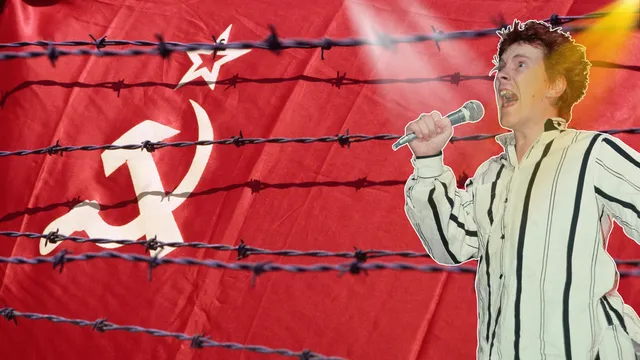
The Village People and KISS were banned from the USSR in the '80s
2025-01-04 00:01- During Stalin's reign, musicians faced extreme pressures that could result in severe consequences, including death.
- Dmitri Shostakovich's career was fraught with tension as he navigated the precarious demands of the regime.
- The experiences of artists under oppression raise questions about the intersection of art and political ideology.
Express your sentiment!
Insights
In the context of Stalin's regime in the Soviet Union, music carried profound risks, directly impacting the lives of composers and musicians. Dmitri Shostakovich, a prominent figure in this turbulent era, experienced the constant fear of repression from the state. An anecdote recounts how he was summoned to the Lubyanka, the secret police headquarters, amidst anxieties over his experimental music. Fortunately for him, his adversary within the regime had faced a harsher fate and was executed. This incident illustrates the precariousness of existence for artists, where the difference between survival and demise was largely determined by chance. The constraints on artistic expression were pervasive during Stalin's rule, reflective of a broader cultural repression. Musicians like Shostakovich were forced to navigate a landscape fraught with ideological scrutiny, where their work was often deemed as either compliant with or subversive to state ideals. This led to treacherous situations where a composer’s survival depended not only on their musical abilities but also on their political conformity. The delicate balance of pleasing the regime while maintaining artistic integrity remained a core dilemma for many during this period. The fate of artists in the Soviet Union was not merely a reflection of personal talent; it was intertwined with the whims of political authority. Western influences faced censorship during the 1980s, as some performers were listed as banned due to their perceived threats to the ideological fabric of Soviet society. This included various bands promoted in a circulated list that, while based on certain realities of censorship, included inaccuracies and fictitious entries. The presence of such bans underscores an ongoing struggle in the cultural discourse that concerned how art and music should interact with prevailing political ideologies. Ultimately, the lives of these musicians exemplified the broader cultural turmoil within the USSR. Legends about their experiences highlight the tension between artistic freedom and state control, a dynamic that characterized creativity under authoritarian rule. Musicians like Shostakovich became emblematic of an era where art was perilously closely aligned with life and death, serving as both a weapon of ideology and a testament to human resilience amid oppression.
Contexts
Soviet censorship of music history played a significant role in shaping cultural narratives and artistic expression throughout the 20th century. The Soviet regime considered music a powerful medium for social influence and propaganda, leading to strict governmental oversight of composers, performers, and musical works. It aimed to control the artistic output that aligned with state ideology, suppressing any music that did not fit the parameters of Socialist Realism, which dictated that art should be accessible and portray a positive representation of Soviet life. Consequently, many composers faced restrictions based not only on their personal beliefs but also on the thematic content of their music. The state sought to elevate specific genres, such as folk music, while demonizing and censoring Western influences, particularly jazz and avant-garde styles, which were deemed too individualistic or ideologically subversive. Prominent figures in classical music, like Dmitri Shostakovich and Sergei Prokofiev, found themselves navigating a treacherous landscape where their creative voices were often stifled by the threat of censorship or persecution. Shostakovich’s music, for instance, reflects a struggle to maintain artistic integrity while adhering to state demands. His shifting artistic identity and the hidden meanings within his compositions exemplify the complex relationship between artists and the regime. One notable example is his Symphony No. 7, which was framed as a representation of the Soviet struggle against fascism during World War II, yet also contained subversive elements that hinted at his critical views towards the government. The Soviet censorship apparatus included various organizations, such as the Union of Soviet Composers, which maintained a stringent system of control. Composers had to seek approval for their works which were often subjected to critique based on ideological merit. Performances of music also required state-sanctioned permissions, ensuring that only the approved pieces were heard by the public. This created an environment of fear and repression, leading many artists to self-censor or modify their works to avoid disfavor. The implications of such censorship extended beyond classical genres, affecting popular music as well; songs that contradicted state narratives were either altered or prohibited from public consumption, significantly limiting the diversity of music available to the populace. However, despite the oppressive atmosphere, some musicians found ways to subvert censorship through coded messages and innovative compositions. The resilience of these artists has had lasting implications for the future of music in Russia and beyond. As historical assessments of Soviet music develop, it becomes clear that this censorship not only influenced its creation but also its legacy. The music produced under such conditions remains a testament to the struggle for artistic freedom and innovation against a backdrop of ideological suppression. Understanding the impact of Soviet censorship on music history provides crucial insights into the broader cultural dynamics of the time and the enduring power of art as a form of resistance.